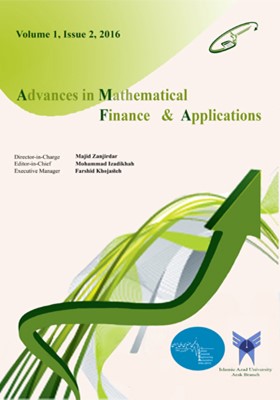Taylor Rule: A Model for the Mechanism of Monetary Policy and Inflation Control in the Framework of the Interest-Free Banking Act
محورهای موضوعی : Financial MathematicsRahman Saadat 1 , Maryam Sheykhimehrabadi 2 , Alireza Masoudian 3
1 - Department of Economy and Management, University Semnan, Iran
2 - Department of Economy, Arak Branch, Islamic Azad University, Arak, Iran
3 - Department of Economy, Arak Branch, Islamic Azad University, Arak, Iran
کلید واژه: Monetary Policy, Inflation Control, Taylor Rule,
چکیده مقاله :
The ultimate goal of monetary policy is to achieve price stability and high output. In this regard, central banks usually change the interest rate, liquidity, and money base in order to apply monetary policies. The John B. Taylor rule is one of the rules known in the transmission of monetary policy.[1] Based on this rule and given the output gap and inflation gap, the central bank increases or decreases the interest rate. Using library references and theoretical foundations, the current paper employed a descriptive-analytical research method to explain the hypothesis stating, “Taylor rule can be used to redefine an optimal monetary rule in the central bank for the mechanism of the stable monetary policy in the framework of Iranian economy and the Interest-Free Banking Act (approved in 1983) to enforce monetary policy and control inflation.” According to the research results and the fact that Taylor rule was successful in some developed and developing countries, it can be redefined in the framework of the Interest-Free Banking Act of Iran. It can also be used as a highly flexible and appropriate monetary rule and a stable model for the mechanism of monetary policy and inflation control.
[1] Dargahi, H, and Sharbatoghli,R, “Determining the Monetary Policy Rule in the Conditions of Stable Economy of Iran Using the Optimal Control Method”, Journal of Economic Investigations, 2010, 93.P.45-80.
[2] Erfani, Al, and Moradi, S, “the Relationship between Stability of Inflation Gap and Monetary Policy of Central Bank in the First, Second, Third, and Fourth Economic, Social, and Cultural Development Plans of I. R. Iran”, Seasonal of Economic Modelling, 2014, 8(4) 4, P.80-97.
[3] Khalili I, Shakouri, M, Zangange, H,” Determining the Optimal Monetary Policy Rule in Iranian Economy Using the Theory of Optimal Control” Journal of Economic Investigations, 2009, 44, P.112-118.
[4] Khatai, M, Seighipur, R,” Tools and Rules Known for Monetary Policies in Iranian Economy, Case Study: The Third Economic and Social Development Plan”, Journal of Economic Investigations, 2006, 73, P.97-119.
[5] Khorsandi, M and Islamioun, K,” the Regularized Monetary Policy or Discretional One? A Theoretical Analysis of Selecting the Appropriate Strategy”, Seasonal of Economic Strategy, 2012, 1, P.450-510.
[6] Komeijani, A, Farzinvash, A, and Al-Din Kia Al Husseini, Z,” an Appropriate Monetary Policy Rule in the Interest-Free Banking Environment”, Scientific Journal of Islamic Economic Research, 2013 13(50), P.45-60
[7] Sharifi, R, Husseini et al.,” Investigating the Impacts of Monetary Policy on GDP through the Loaning Channel at Iranian Banking System”, Seasonal of Economic Modeling, 2009, 4, P.118-120.
[8] Taqinezhad, O,” the Expanded Taylor Rule: Case Study: Iran 1979-2007”, Seasonal of Economic Modeling, 2012. 9.
[10] Tavakolian, H,” the Rule or Discretion in the Policy Behavior of Central Bank: Markov Switching Approach, Kalman Filter”, Dynamic Stochastic General Equilibrium Modeling, Doctoral Dissertation, School of Economy, University of Tehran, 2013.


